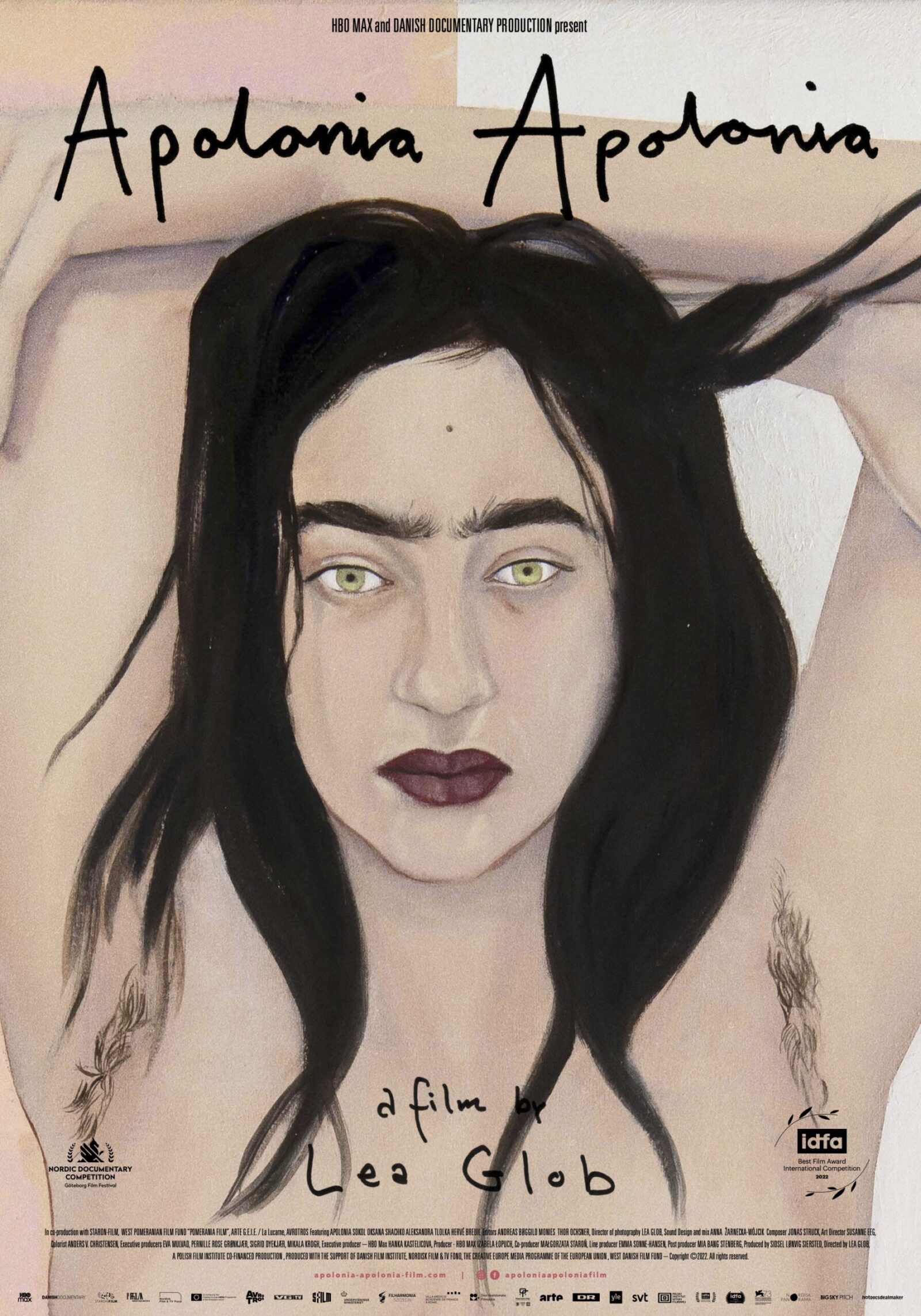
At times this documentary, filmed over a 13-year period by Lea Glob, seems suspiciously perfect. Centered on Apolonia Sokol, an enigmatic and beautiful artist, with a life full of bohemian tragedy, who the camera lovingly captures with her asymmetric haircut and perpetually half-smoked cigarette. It’s almost too curated, like a film rather than a documentary. But possibly that’s disappointment in our own ordinariness in the face of extraordinary artistry.
Apolonia Sokol grew up in a theatre. Her mother had fled communist Poland at the age of 18 and somehow managed to land in this artistic cauldron in France. As she grew up Sokol realized she wanted to walk in the footsteps of the greatest painters. Glob captures this journey, giving both an insight into Apolonia and the artistic world she wanted to claim for herself.
 The documentary is chronologically biographical. So if you are unfamiliar with the work of Sokol, and her reputation, the first third of the documentary leaves you with many questions. Is she any good? Is this documentary about success or failure? Are we merely watching a confected ideal of a struggling female artist? At first, the paintings are only partially glimpsed, or we hear a critic’s opinion of them rather than seeing them with our own eyes. So instead of the art the camera is focused on Sokol’s life. We meet her girlfriend and soul mate Oksana. Oksana was an anti-Russian political dissident and artist from Ukraine. Oksana was integral to the Femen protest movement, who consider themselves the militant wing of feminism. Apolonia creates a sanctuary in her home for Oksana and her fellow Femen which then attracts a number of attacks, including a double knifing and possibly arson. All this as Sokol was in the process of creating the art for her final degree.
The documentary is chronologically biographical. So if you are unfamiliar with the work of Sokol, and her reputation, the first third of the documentary leaves you with many questions. Is she any good? Is this documentary about success or failure? Are we merely watching a confected ideal of a struggling female artist? At first, the paintings are only partially glimpsed, or we hear a critic’s opinion of them rather than seeing them with our own eyes. So instead of the art the camera is focused on Sokol’s life. We meet her girlfriend and soul mate Oksana. Oksana was an anti-Russian political dissident and artist from Ukraine. Oksana was integral to the Femen protest movement, who consider themselves the militant wing of feminism. Apolonia creates a sanctuary in her home for Oksana and her fellow Femen which then attracts a number of attacks, including a double knifing and possibly arson. All this as Sokol was in the process of creating the art for her final degree.
After the tumult of college Sokol ends up under the wing of a US art dealer Stefan Simchowitz, also known as ‘the patron Satan’ of art. After agreeing a Faustian pact for him to sell her art Sokol produces more volume of paintings than her talent can satisfy. A critic says this has destroyed her reputation and that she is finished for now, but that there is a way out, and that is for her to be ‘very good’. Of course, Sokol is, and in the last third of the documentary, we really see the vibrant power of her work and the accolades it brings.
The style of the documentary is intimate bric a brac that erases the camera. Excerpts from Sokol’s studio, conversations in bed with her lover Oksana, endless cigarettes, and meanderings through galleries. The one odd note is when the documentarian Glob inserts her own dire health and fertility struggles into the narrative. It’s too short an interjection to have anything but a personal meaning and leaves the audience with more questions than answers. The rest of the documentary has such a longing focus on Sokol that everyone else seems extraneous, even those whose tragedy forms the fabric of her life.
Queerguru Contributing Editor ANDREW HEBDEN is a MEDIA and cultural STUDIES graduate spending his career between London, Beijing, and NYC as an expert in media and social trends. As part of the expanding minimalist FIRE movement, he recently returned to the UK and lives in Soho. He devotes as much time as possible to the movies, theatre, and the gym. His favorite thing is to try something (anything) new every day”

